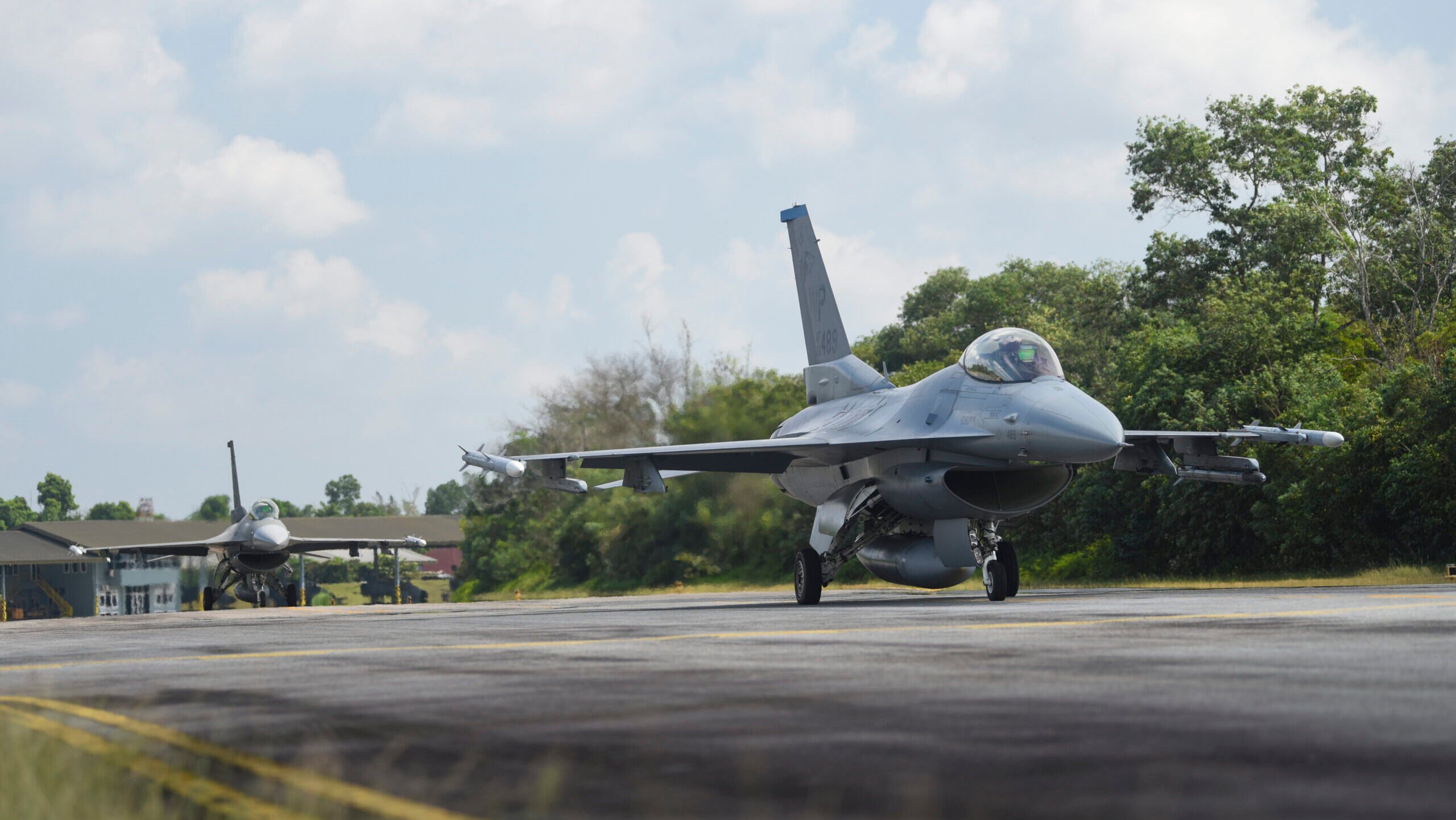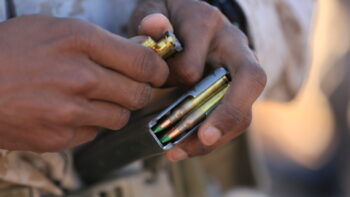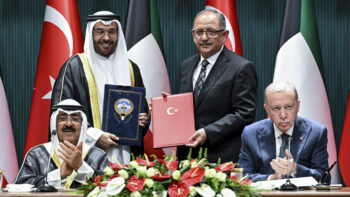
U.S. Air Force F-16s assigned to the 35th Fighter Squadron, Kunsan Air Base, Republic of Korea, taxi on the taxiway at Roesmin Nurjadin Air Force Base, Indonesia, June 13, 2023. (U.S. Air Force photo by Tech. Sgt. Timothy Moore)
AFA WARFARE SYMPOSIUM — Northrop Grumman has locked up two international customers for its new electronic warfare (EW) suite for the F-16 Fighting Falcon, the start of what the company hopes will be a lucrative expansion of its system abroad with US funding uncertain, an executive tells Breaking Defense.
In an interview this week at the Air and Space Forces Association Warfare Symposium, Northrop’s vice president for Navigation, Targeting and Survivability James Conroy argued that with the explosion of EW around the globe, equipping systems with proper EW capabilities should be a top priority for global customers.
“There’s a changing RF [radio frequency] threat environment,” Conroy said. “So now we really believe that electronic warfare is required for all platforms.”
Recently, the defense giant booked two new orders for its Integrated Viper Electronic Warfare Suite (IVEWS), according to Conroy. One was Turkey, which picked the IVEWS for brand new Lockheed Martin-made F-16s and upgrades of existing ones after the sale was recently cleared by the State Department. (Turkey’s F-16’s order was tied to the approval of Sweden’s NATO bid, and the sale was approved days after Ankara greenlit Stockholm’s accession to the alliance.)
A second customer has additionally selected IVEWS to upgrade its F-16 fleet, according to Conroy, though he said he could not disclose the buyer.
However, the fate of IVEWS in the US — likely the single biggest customer for upgrade — is less clear. The Air Force had planned to modernize its F-16 fleet with the IVEWS, but the service changed course in its fiscal 2024 budget request, shifting money from modernization programs like IVEWS to newer aircraft efforts. The IVEWS, Conroy said, was a casualty of the decision to defund fourth-generation aircraft modernization broadly.
The FY24 National Defense Authorization Act that passed in December restored that funding for IVEWS, Conroy said, but that money won’t actually come through unless Congress appropriates it in a still-unpassed FY24 budget.
In the meantime, Northrop has “got through all of our major development milestones,” Conroy said, and is aiming to tackle its next: flight testing on the F-16 that is planned for “the end of this quarter.” An operational assessment is then planned to be completed around “mid-year,” he said.
Looking ahead, Conroy says he expects even more customers for IVEWS could lie ahead. And to sell to them, the company may have to compete with others like L3Harris, which also makes an F-16 EW suite that has been picked by some foreign customers.
“I believe there is a large market,” he said, pointing to the Fighting Falcon’s status as the most widely exported US-made fighter. Many international users may not end up buying newer jets, he noted, likely meaning they would need to modernize their older fleets of fourth-gen fighters like the F-16.
“They’re going to need this type of capability on their aircraft to be operationally relevant,” he said.






















